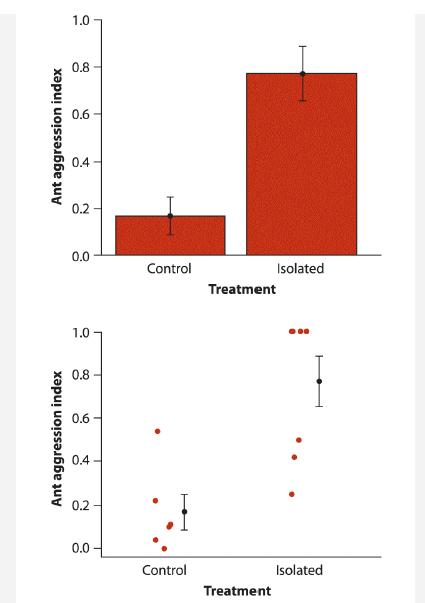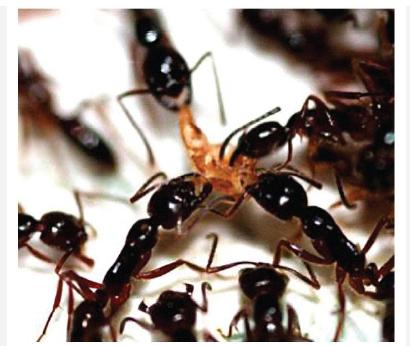Despite the voracious habits of army ants, multiple species of invertebrates have managed to penetrate and exploit
Question:
Despite the voracious habits of army ants, multiple species of invertebrates have managed to penetrate and exploit their societies. For example, the silverfish Malayatelura ponerophila is an insect that lives only in colonies of the Southeast Asia army ant, Leptogenys distinguenda, where it steals food brought in by the ants. If detected, the silverfish becomes ant food (see photo on the next page), but how does it usually evade detection?
Ants recognize other ants from their own colony with a chemical signature, a complex blend of cuticular hydrocarbons (CHCs) on the surface of their exoskeleton. The silverfish have been observed rubbing up against the ants, and isotope-labeling studies indicate that ant CHCs are transferred to the silverfish this way. Does chemical mimicry contribute to ant tolerance of silverfish? In one of a series of experiments, von Beeren et al. (2011) collected individual silverfish from ant colonies and isolated them for six days, after which most of the acquired CHCs had evaporated.
The aggressive behavior of the ants toward these silverfish was then compared with behavior toward control silverfish not isolated for six days. The data below measure ant aggression toward the silverfish on a scale from 0 to 1.



a. Two commonly used methods for presenting the results are shown in the accompanying figure (with standard error bars). Which method is superior? Why?
b. Without transforming the data, apply an appropriate method to test whether the distribution of the aggression index by ants toward silverfish was affected by isolation.
Step by Step Answer:

The Analysis Of Biological Data
ISBN: 9781319226237
3rd Edition
Authors: Michael C. Whitlock, Dolph Schluter





